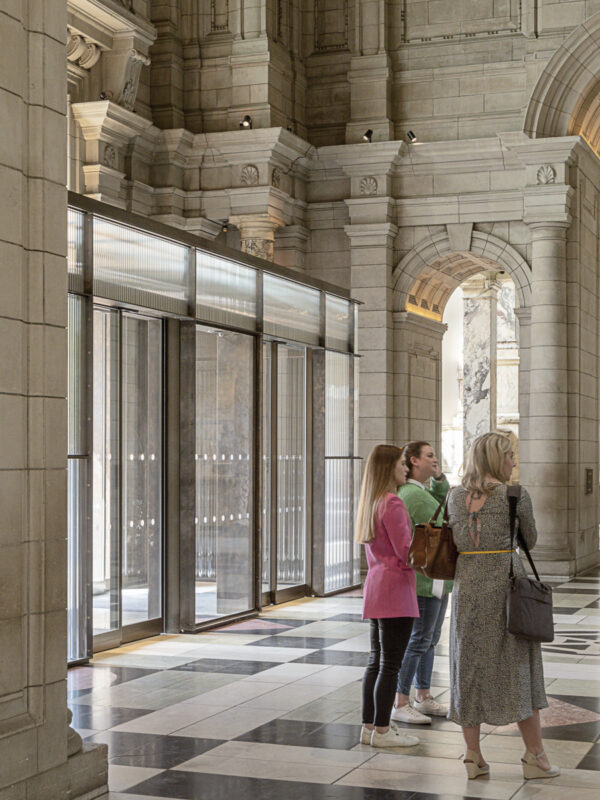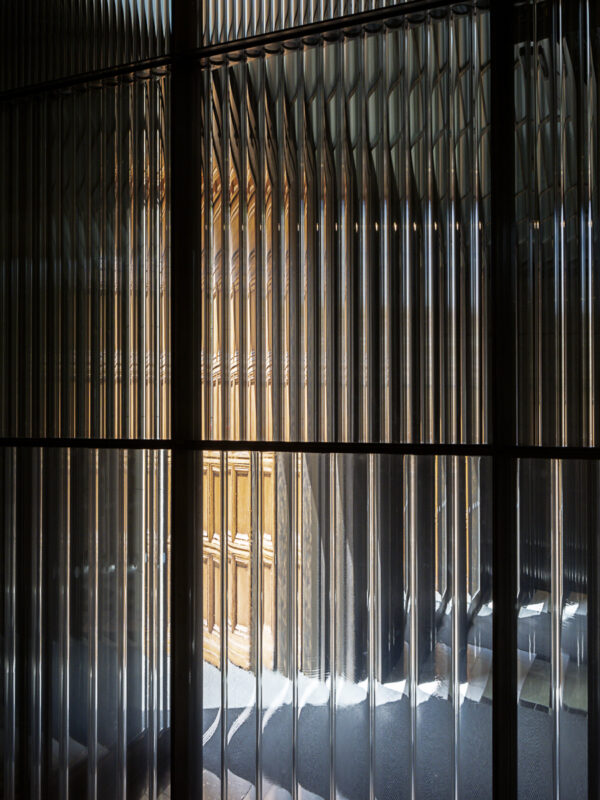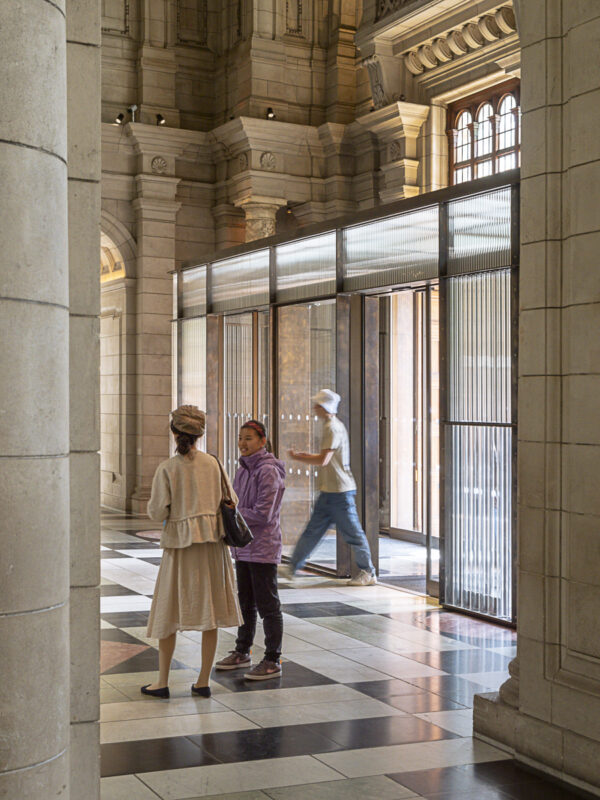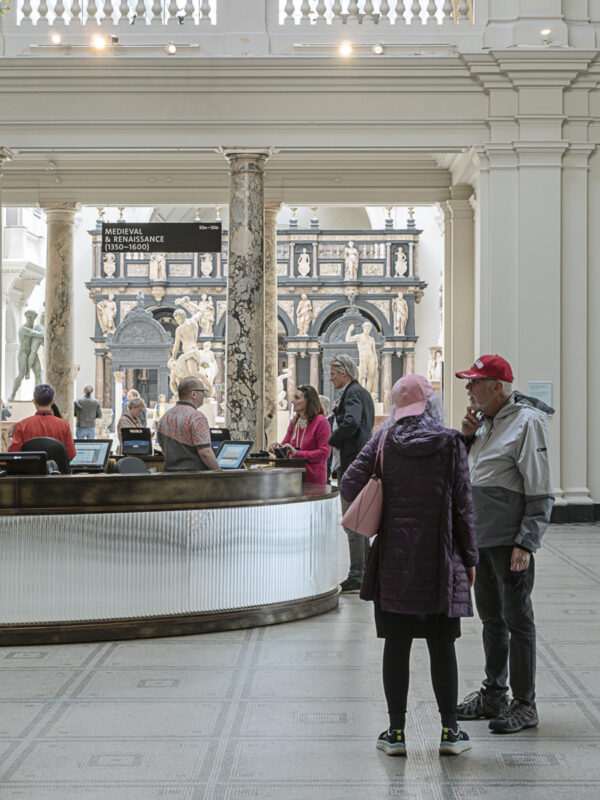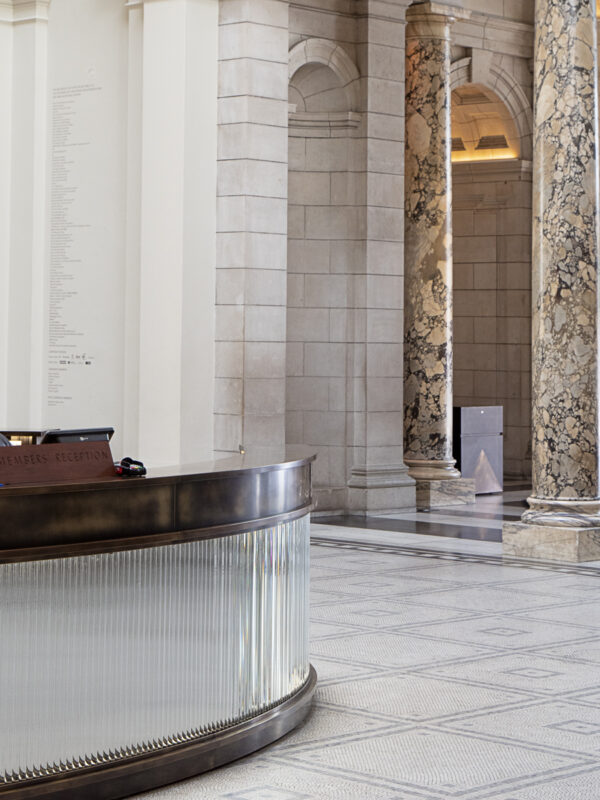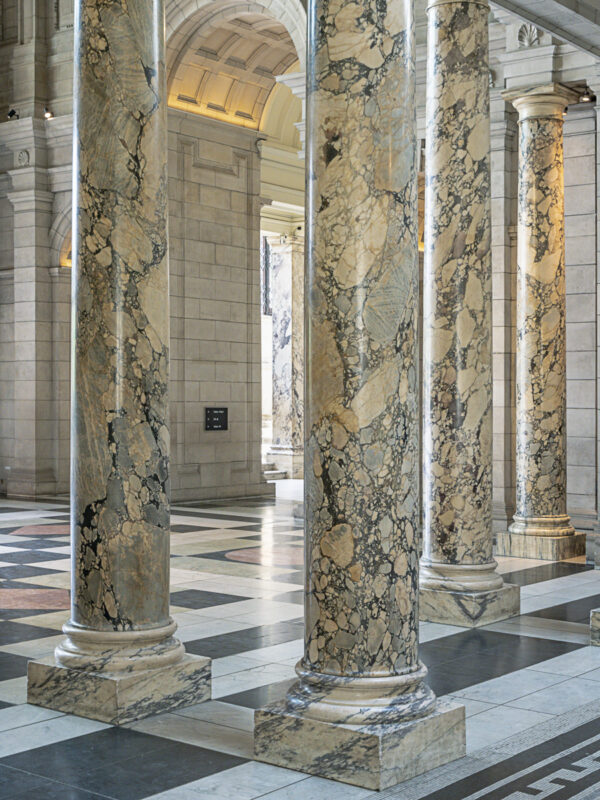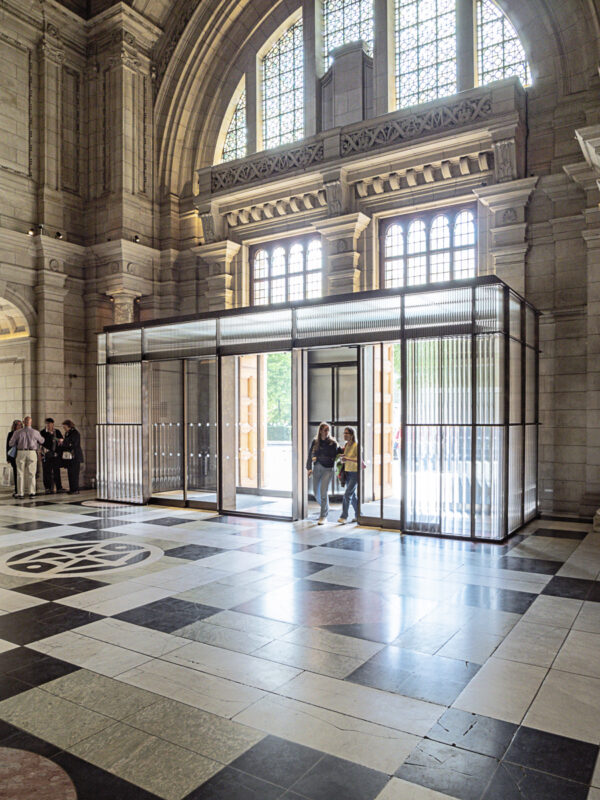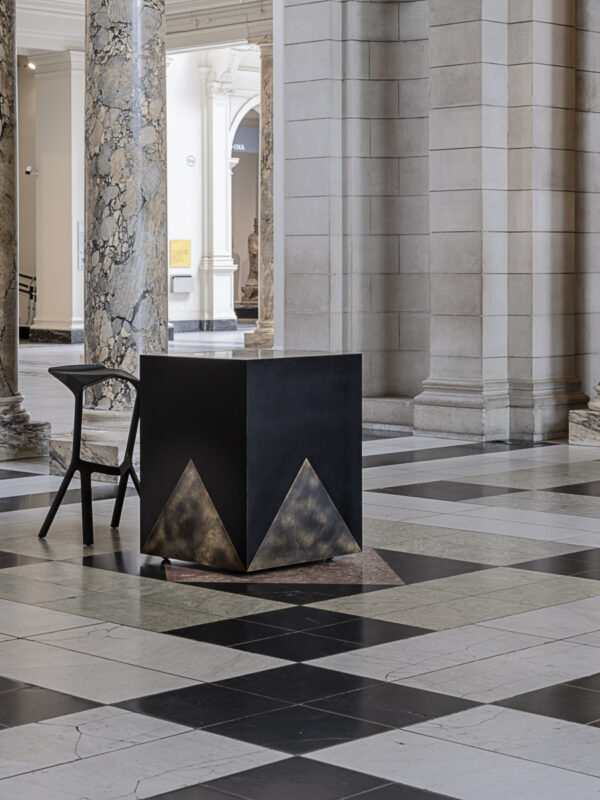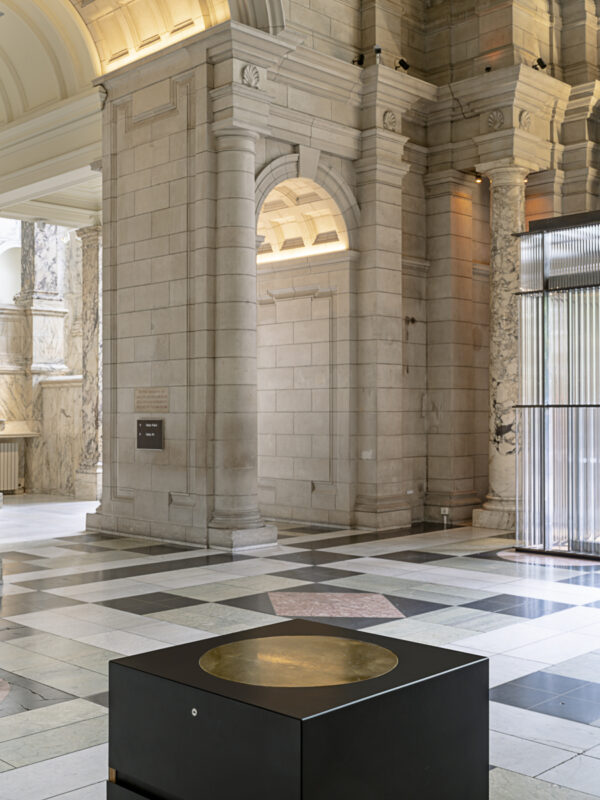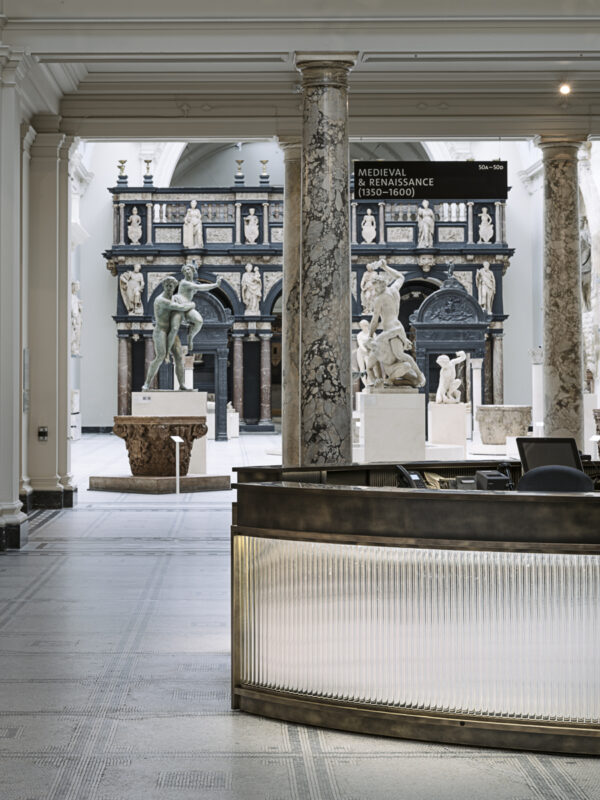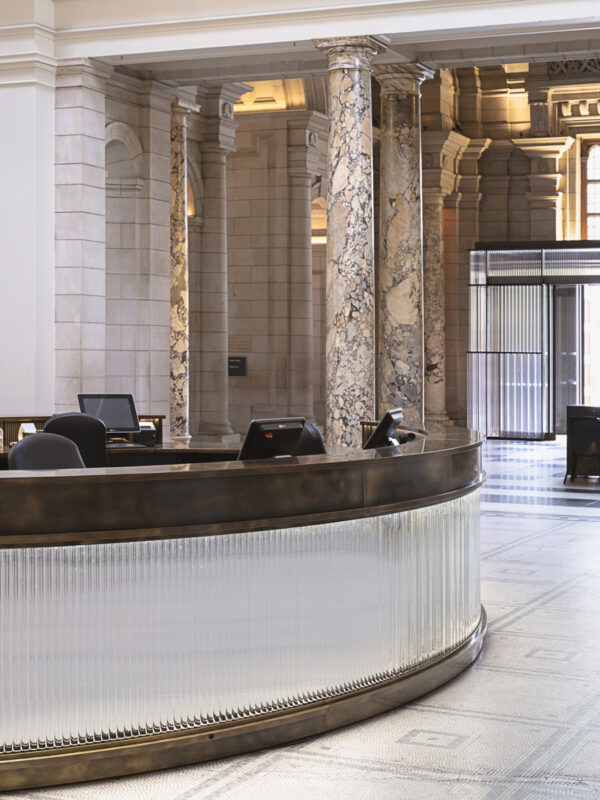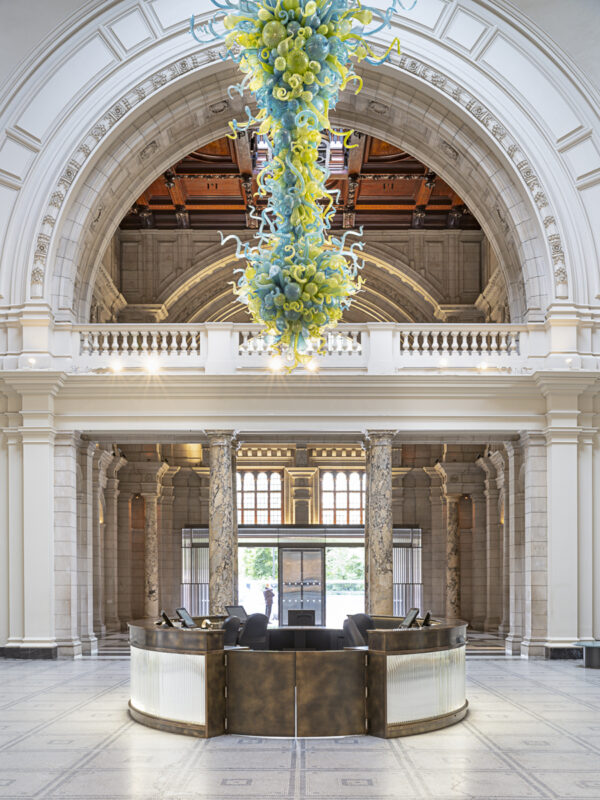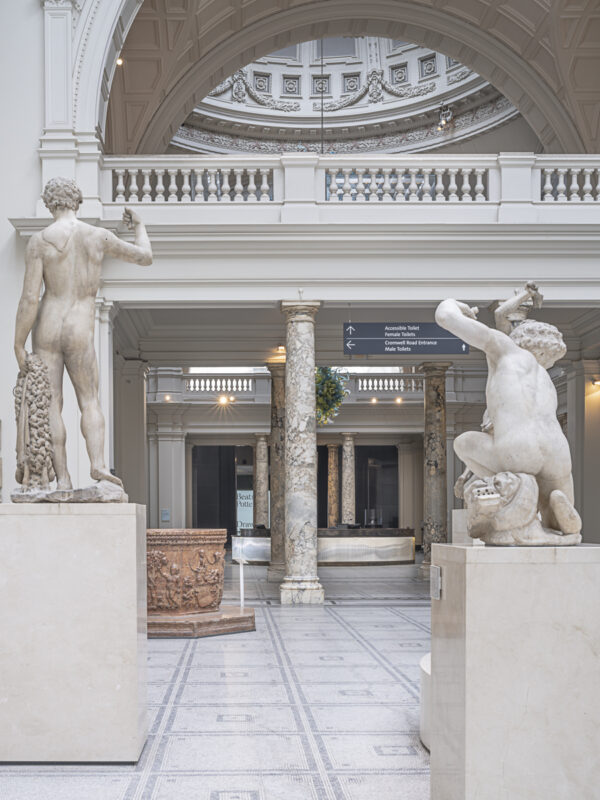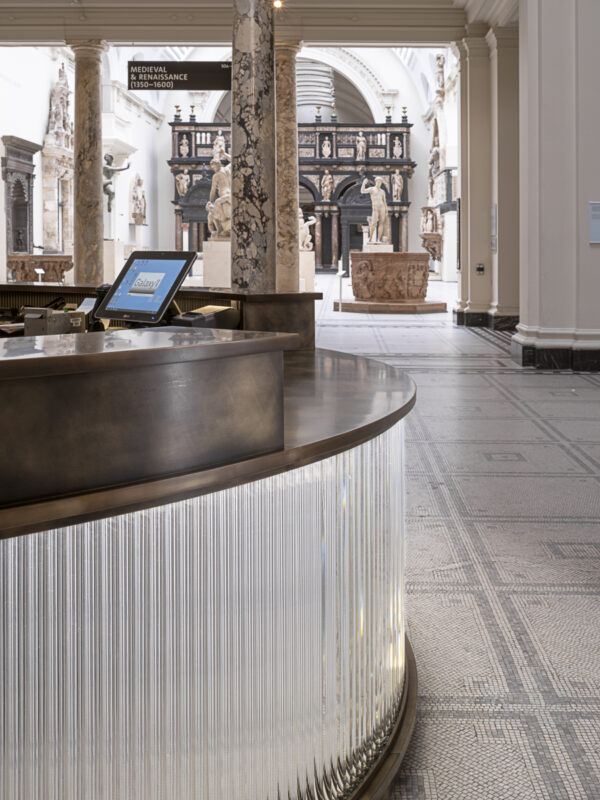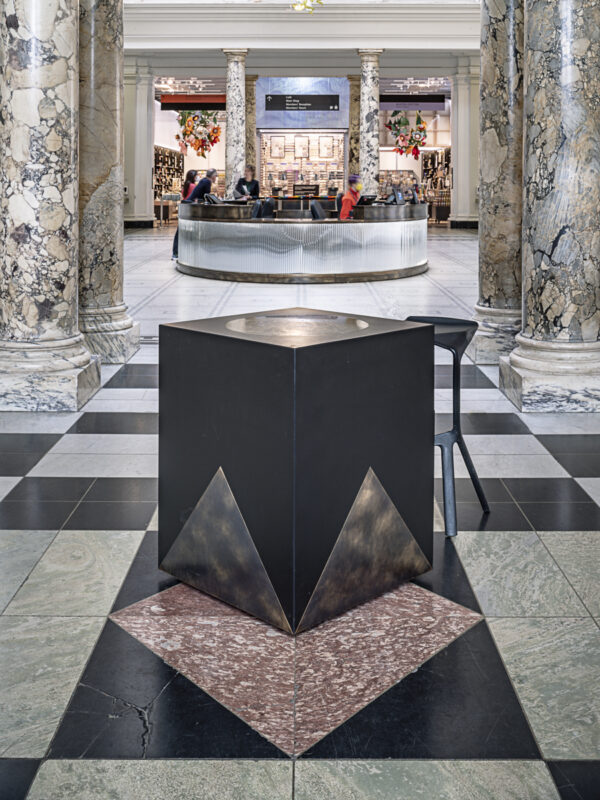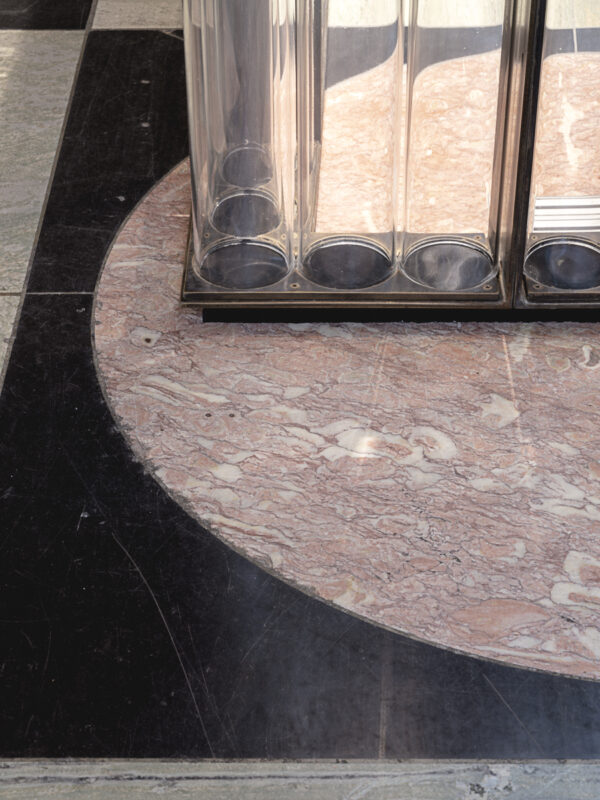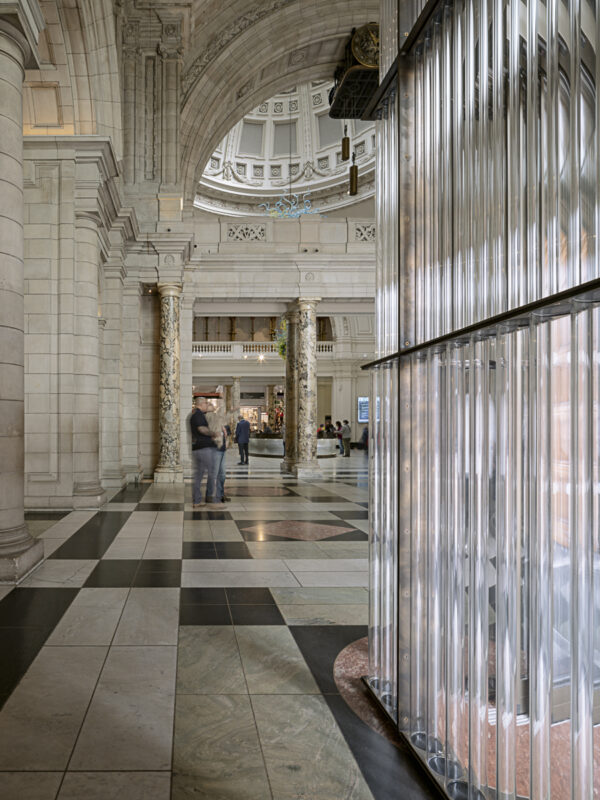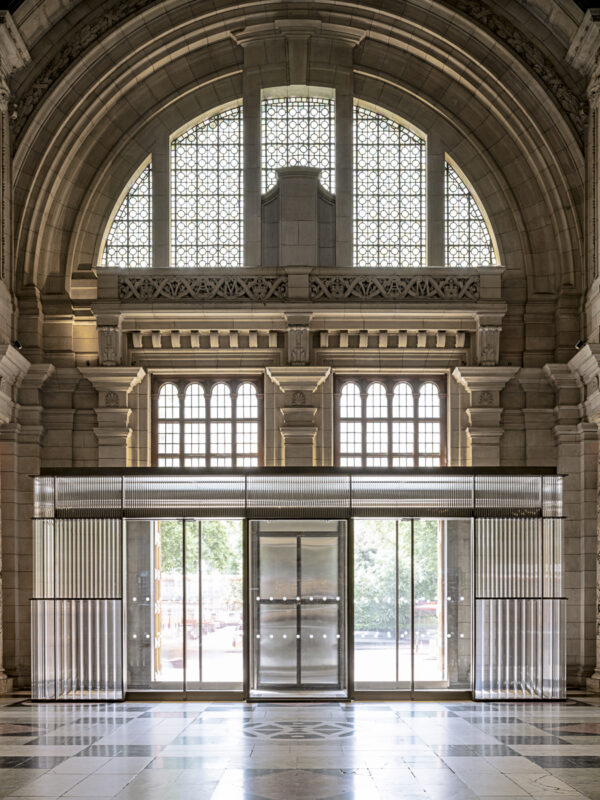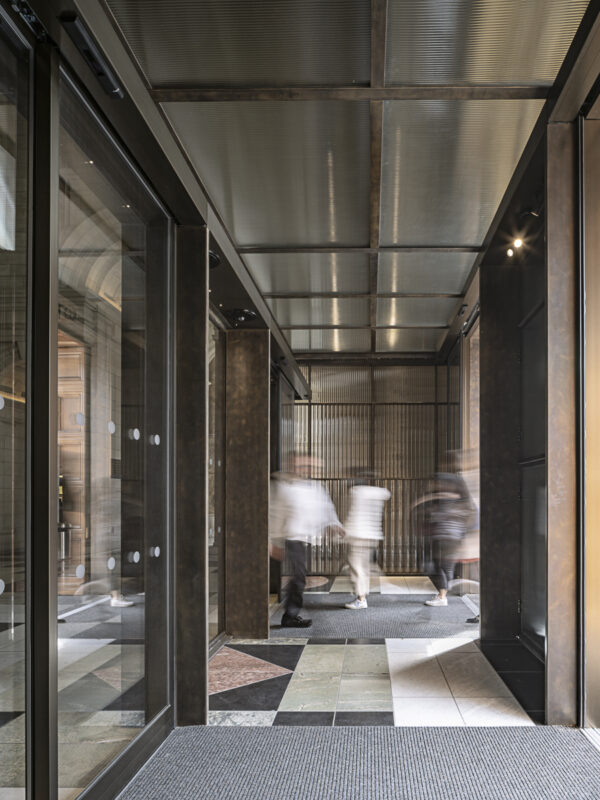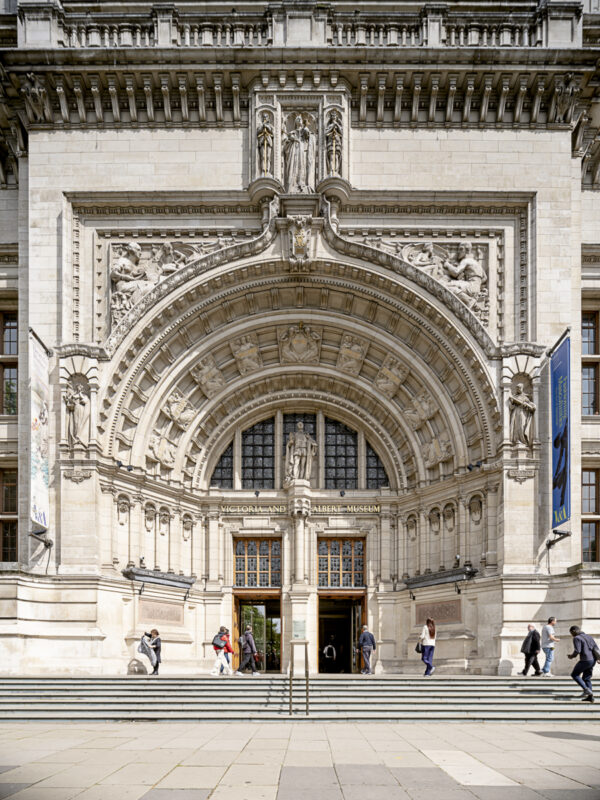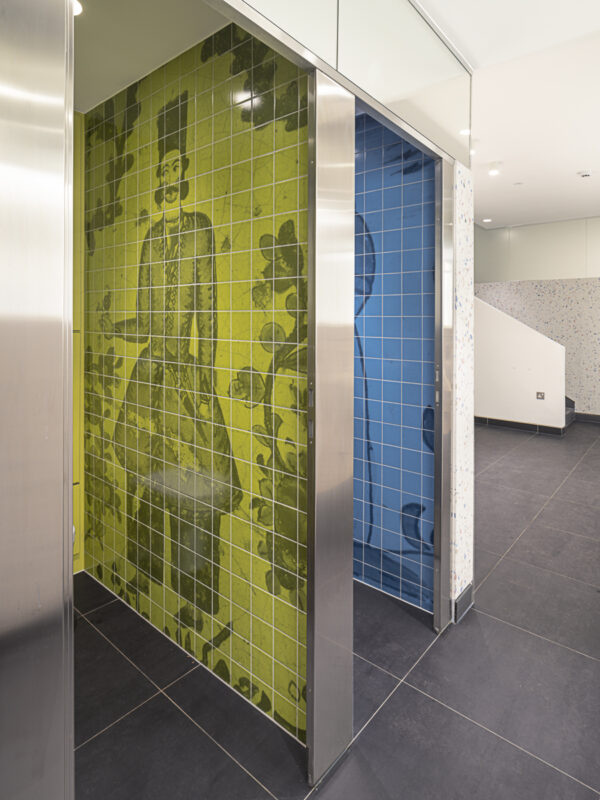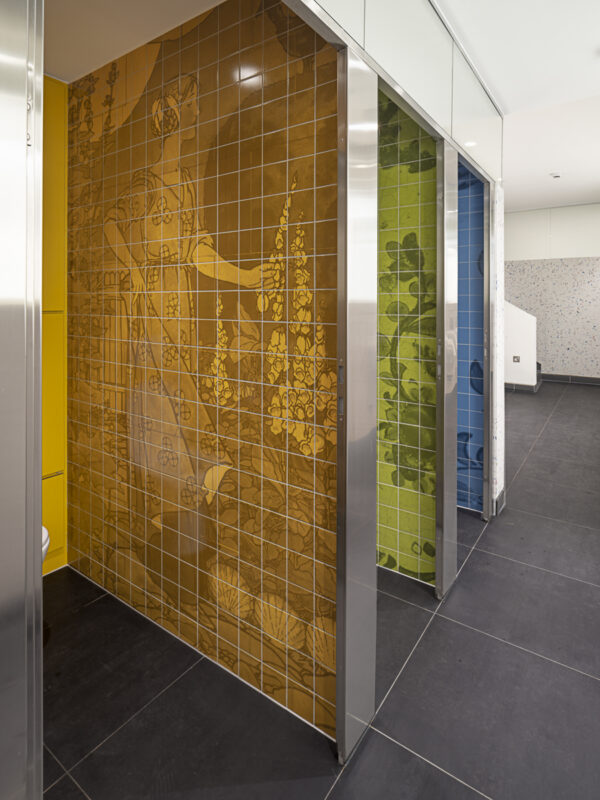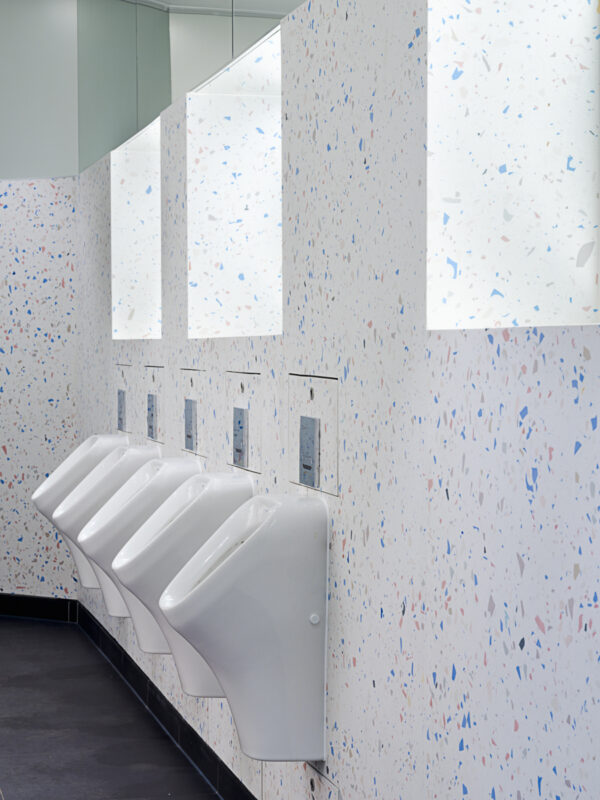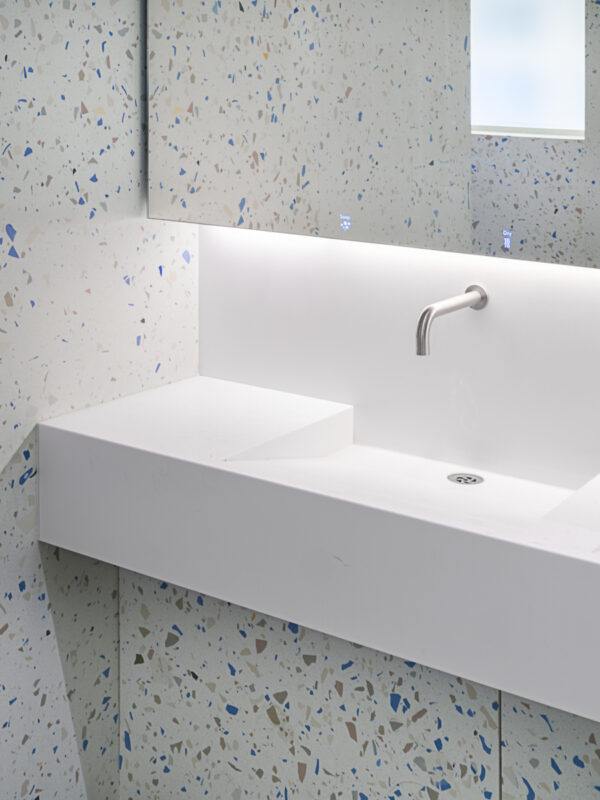V&A MUSEUM
Refurbishment to the entrance of a Grade I Listed building, involving forming of a new entrance lobby, welcome desk, full strip out and reconfiguration of the existing visitor toilets. This was a complex build in a live environment, with a high-specification finish.
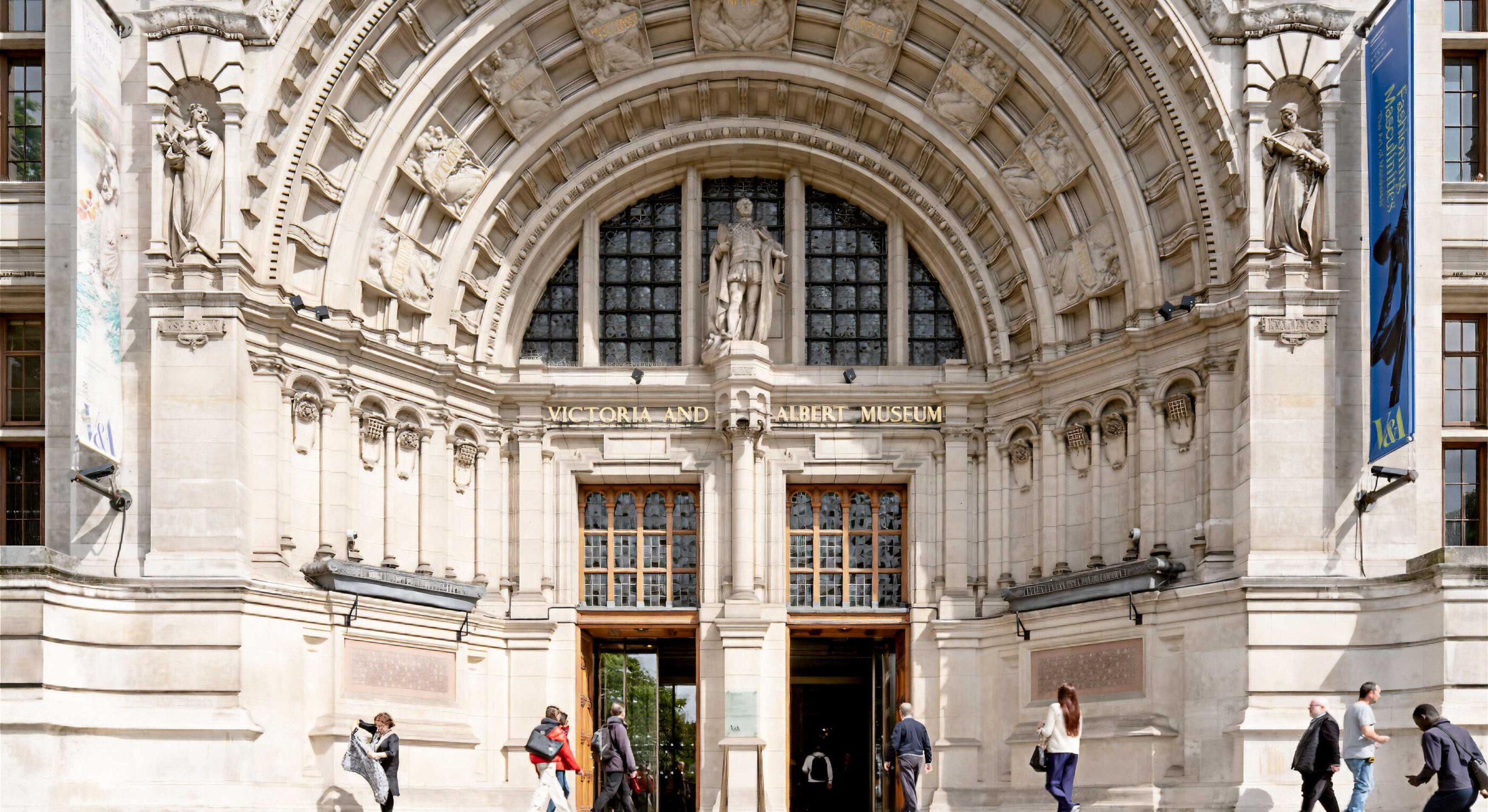
Project Details
-
01
OVERVIEW
This was a refurbishment project with the stunning and prestigious V&A Museum, a Grade I Listed Building in the heart of London.
-
02
SCOPE OF WORKS
The project included a new entrance lobby, welcome desk, full strip out and reconfiguration of the existing visitor toilets.
-
03
WORKS METHODOLOGY
This was a complex build in a live environment, with a high-specification finish.
ENTRANCE
The project included the installation of a new entrance structure, and desk incorporation of automatic door sets, security access control, MEP and lighting installation. The bespoke metal work and glass tubes were of a specialist manufacturing process and had significant lead-ins which presented a programming challenge with the structures being built off site.
We also built a bespoke dust proof enclosure to match the surrounding walls. The existing 1990s frameless glass entrance structure was removed by a planned reverse build process and the existing marble floor was cut out where required. The new entrance structure was erected over an extremely short time frame. The floor of the entrance proved to be a challenge as we needed to source marble that matched that of the existing 200-year
old floor.After extensive research, we found a quarry that was operational and provided the type of reclaimed marble we were trying to source. The marble was cut, prepared, and honed off site to match to the existing slabs which had been in place so impressively since the Museum was opened in the 1800s. The marble and entrance matting was then installed.
RESTROOM & TOILETS
The project included the installation of a new entrance structure, and desk incorporation of automatic door sets, security access control, MEP and lighting installation. The bespoke metal work and glass tubes were of a specialist manufacturing process and had significant lead-ins which presented a programming challenge with the structures being built off site.
We also built a bespoke dust proof enclosure to match the surrounding walls. The existing 1990s frameless glass entrance structure was removed by a planned reverse build process and the existing marble floor was cut out where required. The new entrance structure was erected over an extremely short time frame. The floor of the entrance proved to be a challenge as we needed to source marble that matched that of the existing 200-year
old floor.After extensive research, we found a quarry that was operational and provided the type of reclaimed marble we were trying to source. The marble was cut, prepared, and honed off site to match to the existing slabs which had been in place so impressively since the Museum was opened in the 1800s. The marble and entrance matting was then installed.
-
04
LIVE ENVIRONMENT
Due to site constraints, our site office was moved to various locations throughout the duration of the project to accommodate museum events and other projects that were being undertaken. We also maintained an offsite delivery warehouse to hold materials so they could be delivered just in time. During many periods of the project, access to our works could only be gained through a long basement tunnel.
With limited working hours due to events and noise restrictions, and the protection of artefacts from dust and vibration a must, these factors all added to the meticulous planning required. Using planned complex methodologies, we were able to communicate and gain approvals before each section of works starts ensure robust quality control throughout.
-
05
OUTCOME
The V&A had a significant fixed date event planned with the new entrance works being a key feature to this.
All works to the entrance area required completion with this event date in mind. In line with Alcema’s reputation for meeting all project deadlines this project was no exception.
The event went ahead as planned and the museum remained open to the public throughout the construction project.
